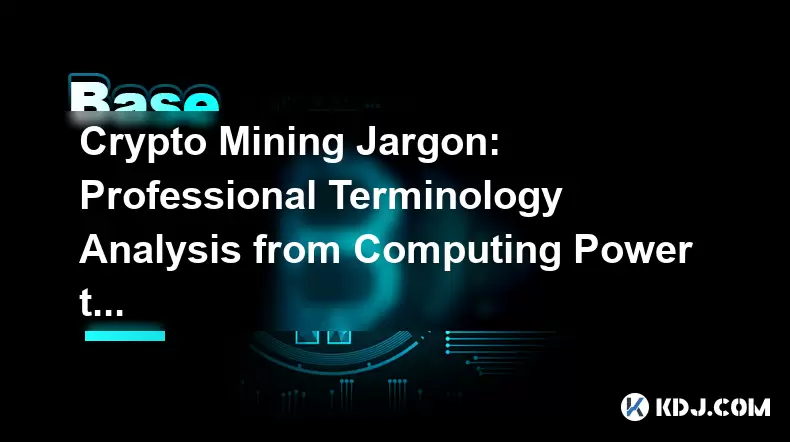-
 Bitcoin
Bitcoin $117700
-0.03% -
 Ethereum
Ethereum $3805
0.49% -
 XRP
XRP $3.098
-1.00% -
 Tether USDt
Tether USDt $1.000
0.03% -
 BNB
BNB $792.8
-1.72% -
 Solana
Solana $177.9
-1.95% -
 USDC
USDC $1.000
0.02% -
 Dogecoin
Dogecoin $0.2202
-1.55% -
 TRON
TRON $0.3278
-2.92% -
 Cardano
Cardano $0.7641
-2.43% -
 Hyperliquid
Hyperliquid $42.21
-2.68% -
 Sui
Sui $3.758
-1.58% -
 Stellar
Stellar $0.4080
-3.21% -
 Chainlink
Chainlink $17.75
-0.33% -
 Bitcoin Cash
Bitcoin Cash $591.8
4.96% -
 Hedera
Hedera $0.2561
-3.09% -
 Avalanche
Avalanche $23.34
-4.24% -
 Litecoin
Litecoin $110.7
1.96% -
 UNUS SED LEO
UNUS SED LEO $8.956
-0.01% -
 Toncoin
Toncoin $3.410
0.79% -
 Ethena USDe
Ethena USDe $1.001
0.03% -
 Shiba Inu
Shiba Inu $0.00001288
-1.82% -
 Uniswap
Uniswap $10.07
-2.06% -
 Polkadot
Polkadot $3.807
-2.27% -
 Monero
Monero $308.2
-2.15% -
 Dai
Dai $1.000
0.03% -
 Bitget Token
Bitget Token $4.521
-0.30% -
 Pepe
Pepe $0.00001134
-1.52% -
 Cronos
Cronos $0.1457
0.65% -
 Aave
Aave $274.9
-2.47%
Crypto Mining Jargon: Professional Terminology Analysis from Computing Power to Mining Pool
Crypto mining involves computing power, hardware like ASICs and GPUs, mining algorithms, pools, difficulty, block rewards, software, and wallets, each crucial for successful operations.
May 11, 2025 at 12:29 pm

In the world of cryptocurrency, mining plays a crucial role in maintaining and securing blockchain networks. For those new to this space, the terminology associated with crypto mining can be overwhelming. This article delves into the professional terminology of crypto mining, from computing power to mining pools, providing a comprehensive analysis to help you better understand this complex field.
Understanding Computing Power in Crypto Mining
Computing power, often referred to as hash rate, is a fundamental concept in crypto mining. It represents the number of calculations a miner's hardware can perform per second. The higher the hash rate, the more likely a miner is to solve the cryptographic puzzle required to add a block to the blockchain and earn the associated rewards.
In the context of Bitcoin, for example, the hash rate is measured in hashes per second (H/s), with larger units such as kilohashes (KH/s), megahashes (MH/s), gigahashes (GH/s), terahashes (TH/s), and even petahashes (PH/s) used to describe the computing power of mining rigs. Understanding hash rate is essential for miners to evaluate the efficiency and profitability of their mining operations.
Exploring the Role of Mining Hardware
Mining hardware is the physical equipment used to perform the computations necessary for mining cryptocurrencies. The most common types of mining hardware include ASICs (Application-Specific Integrated Circuits), GPUs (Graphics Processing Units), and CPUs (Central Processing Units). Each type of hardware has its own strengths and weaknesses, and the choice depends on the cryptocurrency being mined and the miner's budget and technical expertise.
ASICs are specifically designed for mining and offer the highest hash rates and energy efficiency for popular cryptocurrencies like Bitcoin. GPUs, while less efficient than ASICs, are more versatile and can be used to mine a wider range of cryptocurrencies. CPUs, on the other hand, are the least efficient and are typically used for mining less competitive cryptocurrencies or for educational purposes.
Deciphering Mining Algorithms
Mining algorithms are the mathematical formulas that miners use to solve cryptographic puzzles and validate transactions on the blockchain. Different cryptocurrencies use different mining algorithms, each with its own characteristics and requirements. Some of the most well-known mining algorithms include SHA-256 (used by Bitcoin), Scrypt (used by Litecoin), Ethash (used by Ethereum), and Equihash (used by Zcash).
Understanding the mining algorithm of a particular cryptocurrency is crucial for selecting the appropriate mining hardware and optimizing mining operations. For instance, ASICs are designed to excel at mining cryptocurrencies that use the SHA-256 algorithm, while GPUs are better suited for cryptocurrencies that use the Ethash algorithm.
The Importance of Mining Pools
Mining pools are groups of miners who combine their computing power to increase their chances of solving the cryptographic puzzle and earning rewards. By joining a mining pool, individual miners can enjoy a more consistent income stream, as the rewards are distributed among pool members based on their contributed computing power.
There are various types of mining pools, including PPS (Pay Per Share), PPLNS (Pay Per Last N Shares), and FPPS (Full Pay Per Share). Each type has its own method of reward distribution and fee structure, and miners must carefully consider these factors when choosing a mining pool.
Analyzing Mining Difficulty and Block Rewards
Mining difficulty is a measure of how hard it is to solve the cryptographic puzzle and add a new block to the blockchain. It is adjusted periodically to maintain a consistent block time, ensuring that new blocks are added to the blockchain at a predictable rate. As more miners join the network and the total computing power increases, the mining difficulty typically rises, making it harder for individual miners to solve the puzzle and earn rewards.
Block rewards are the incentives given to miners for successfully adding a new block to the blockchain. These rewards typically consist of newly minted coins and transaction fees. The block reward for Bitcoin, for example, started at 50 BTC per block and is halved approximately every four years, with the current reward standing at 6.25 BTC per block.
Navigating Mining Software and Wallets
Mining software is the program that interfaces between the mining hardware and the blockchain network. It manages the communication between the miner's hardware and the mining pool, as well as the distribution of rewards. Popular mining software includes CGMiner, EasyMiner, and BFGMiner, each with its own set of features and supported cryptocurrencies.
Mining wallets are specialized wallets designed to store the cryptocurrencies earned through mining. These wallets often include features such as automatic coin conversion, transaction management, and integration with mining software. Examples of mining wallets include Coinomi, Exodus, and Ledger Live, each offering different levels of security and functionality.
Frequently Asked Questions
Q: How can I calculate the profitability of my mining operation?
A: To calculate the profitability of your mining operation, you need to consider several factors, including the hash rate of your mining hardware, the electricity cost, the current block reward, the mining difficulty, and the price of the cryptocurrency being mined. You can use online mining calculators, such as those provided by Coinwarz or WhatToMine, to input these variables and get an estimate of your potential profits.
Q: What is the difference between solo mining and pool mining?
A: Solo mining involves mining on your own without joining a mining pool. While solo mining can be more rewarding if you successfully mine a block, it is also more unpredictable and requires significant computing power. Pool mining, on the other hand, involves joining a group of miners to combine computing power and share the rewards. Pool mining offers a more consistent income stream but typically comes with pool fees and a smaller share of the rewards.
Q: How do I choose the right mining hardware for a specific cryptocurrency?
A: To choose the right mining hardware for a specific cryptocurrency, you need to consider the mining algorithm used by that cryptocurrency and the hardware's compatibility with that algorithm. For example, if you want to mine Bitcoin, which uses the SHA-256 algorithm, you should opt for an ASIC designed specifically for SHA-256 mining. Additionally, you should consider factors such as the hardware's hash rate, energy efficiency, and cost to ensure that your mining operation remains profitable.
Q: What are the risks associated with crypto mining?
A: Crypto mining comes with several risks, including the volatility of cryptocurrency prices, the potential for hardware malfunctions, and the high energy costs associated with running mining equipment. Additionally, as mining difficulty increases, the profitability of mining operations can decrease, making it important for miners to stay informed about market conditions and adjust their strategies accordingly.
Disclaimer:info@kdj.com
The information provided is not trading advice. kdj.com does not assume any responsibility for any investments made based on the information provided in this article. Cryptocurrencies are highly volatile and it is highly recommended that you invest with caution after thorough research!
If you believe that the content used on this website infringes your copyright, please contact us immediately (info@kdj.com) and we will delete it promptly.
- XRP, AI, and Price Projections: Decoding the Crypto Future
- 2025-07-31 15:10:13
- XRP Investment: Expert Opinions and the Potential for Explosive Growth
- 2025-07-31 15:15:12
- XRP Price: Whale Buys and Token Scoops—What's Next?
- 2025-07-31 15:30:12
- Imagen Network, RLUSD Payments, and Decentralized Applications: A New Era of Web3?
- 2025-07-31 14:30:12
- Meme Coins: Buy and Hold for the Long Term? Decoding the Hype
- 2025-07-31 14:30:12
- XRP Analyst's Market Outlook: Boom or Bust in the Crypto Wild West?
- 2025-07-31 15:35:19
Related knowledge

What is the difference between CeFi and DeFi?
Jul 22,2025 at 12:28am
Understanding CeFi and DeFiIn the world of cryptocurrency, CeFi (Centralized Finance) and DeFi (Decentralized Finance) represent two distinct financia...

How to qualify for potential crypto airdrops?
Jul 23,2025 at 06:49am
Understanding What Crypto Airdrops AreCrypto airdrops refer to the distribution of free tokens or coins to a large number of wallet addresses, often u...

What is a crypto "airdrop farmer"?
Jul 24,2025 at 10:22pm
Understanding the Role of a Crypto 'Airdrop Farmer'A crypto 'airdrop farmer' refers to an individual who actively participates in cryptocurrency airdr...

What is the difference between a sidechain and a Layer 2?
Jul 20,2025 at 11:35pm
Understanding the Concept of SidechainsA sidechain is a separate blockchain that runs parallel to the main blockchain, typically the mainnet of a cryp...

What is the Inter-Blockchain Communication Protocol (IBC)?
Jul 19,2025 at 10:43am
Understanding the Inter-Blockchain Communication Protocol (IBC)The Inter-Blockchain Communication Protocol (IBC) is a cross-chain communication protoc...

How does sharding improve scalability?
Jul 20,2025 at 01:21am
Understanding Sharding in BlockchainSharding is a database partitioning technique that is increasingly being adopted in blockchain technology to enhan...

What is the difference between CeFi and DeFi?
Jul 22,2025 at 12:28am
Understanding CeFi and DeFiIn the world of cryptocurrency, CeFi (Centralized Finance) and DeFi (Decentralized Finance) represent two distinct financia...

How to qualify for potential crypto airdrops?
Jul 23,2025 at 06:49am
Understanding What Crypto Airdrops AreCrypto airdrops refer to the distribution of free tokens or coins to a large number of wallet addresses, often u...

What is a crypto "airdrop farmer"?
Jul 24,2025 at 10:22pm
Understanding the Role of a Crypto 'Airdrop Farmer'A crypto 'airdrop farmer' refers to an individual who actively participates in cryptocurrency airdr...

What is the difference between a sidechain and a Layer 2?
Jul 20,2025 at 11:35pm
Understanding the Concept of SidechainsA sidechain is a separate blockchain that runs parallel to the main blockchain, typically the mainnet of a cryp...

What is the Inter-Blockchain Communication Protocol (IBC)?
Jul 19,2025 at 10:43am
Understanding the Inter-Blockchain Communication Protocol (IBC)The Inter-Blockchain Communication Protocol (IBC) is a cross-chain communication protoc...

How does sharding improve scalability?
Jul 20,2025 at 01:21am
Understanding Sharding in BlockchainSharding is a database partitioning technique that is increasingly being adopted in blockchain technology to enhan...
See all articles

























































































